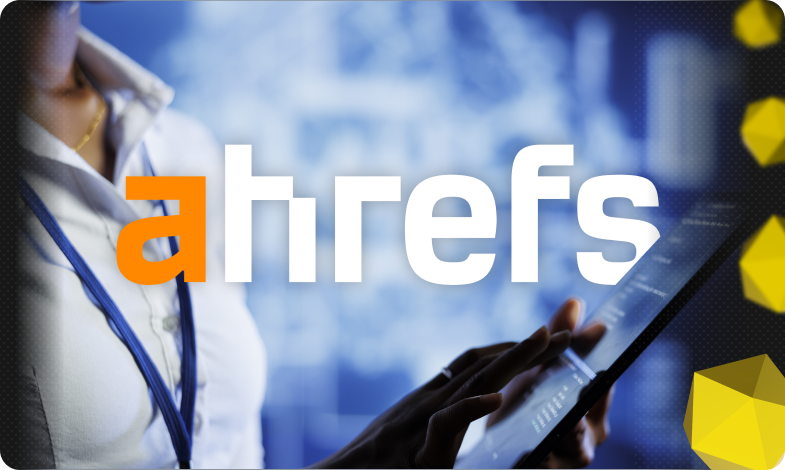Content of the article
- /01 What is the PESO model and how it works
- /02 The main trends of PESO in 2025
- /03 Owned Media: the foundation of the strategy
- /04 Shared Media: engagement and interaction
- /05 Paid Media: scaling the reach
- /06 Earned Media: strengthening your reputation
- /07 How Owned and Earned media boost search rankings
- /08 Measuring effectiveness
- /09 Practical steps to implement PESO in business
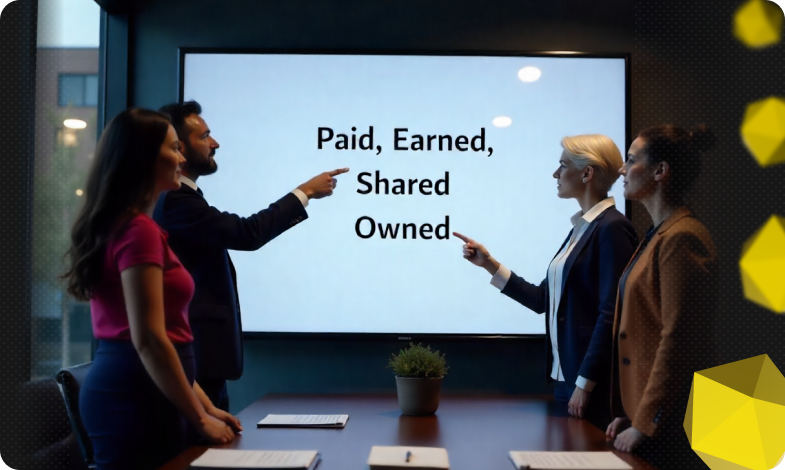
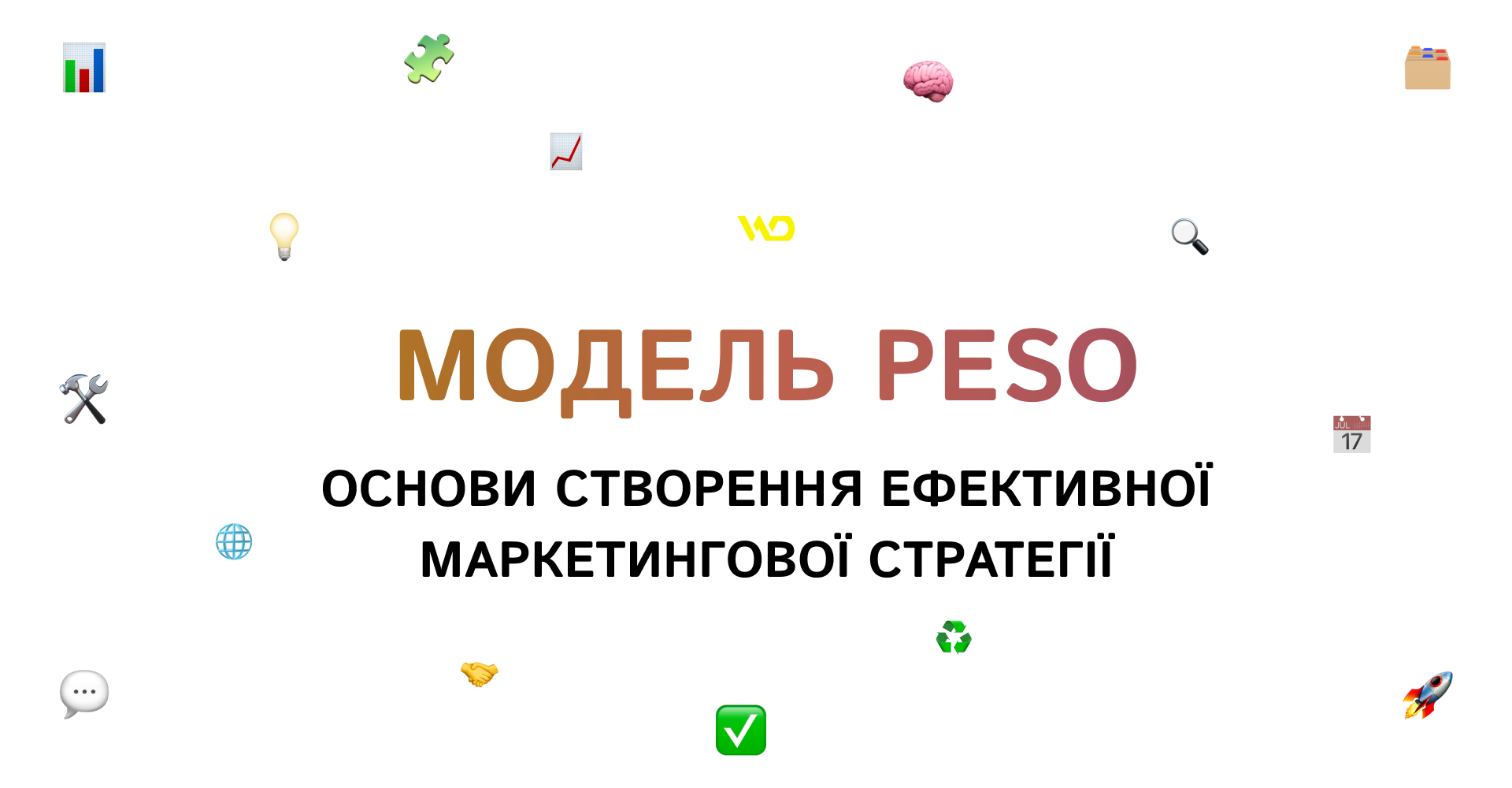
The information space is oversaturated with communication channels and advertising messages. Therefore, the success of a business increasingly depends on the ability to build a holistic, integrated promotion strategy. The classic marketing silos – individual PR campaigns, advertising links, social media, or content on your own website – no longer provide the necessary level of influence and trust. That is why the PESO model is now considered one of the most effective tools for creating a balanced marketing strategy.
In this article, we’ll look at why integrated communications are becoming a prerequisite for successful brand development in 2025, outline the main components of the PESO model and their key differences. And how to build a unified strategy and effectively use each of the four PESO channels.
What is the PESO model and how it works
The PESO model was proposed by American PR expert Gini Dietrich and first described on the Spin Sucks platform as a universal approach to integrating all types of media into a single communication strategy. The idea was to combine the power of four promotion channels to create synergy and maximize audience reach.
The integration of all four elements of the PESO model allows not only to attract new market segments through targeted advertising, but also to build trust through objective media mentions and customer reviews, intensify dialogue with the audience on social media, and deepen loyalty through high-quality unique content on its own channels.
Components of the PESO model
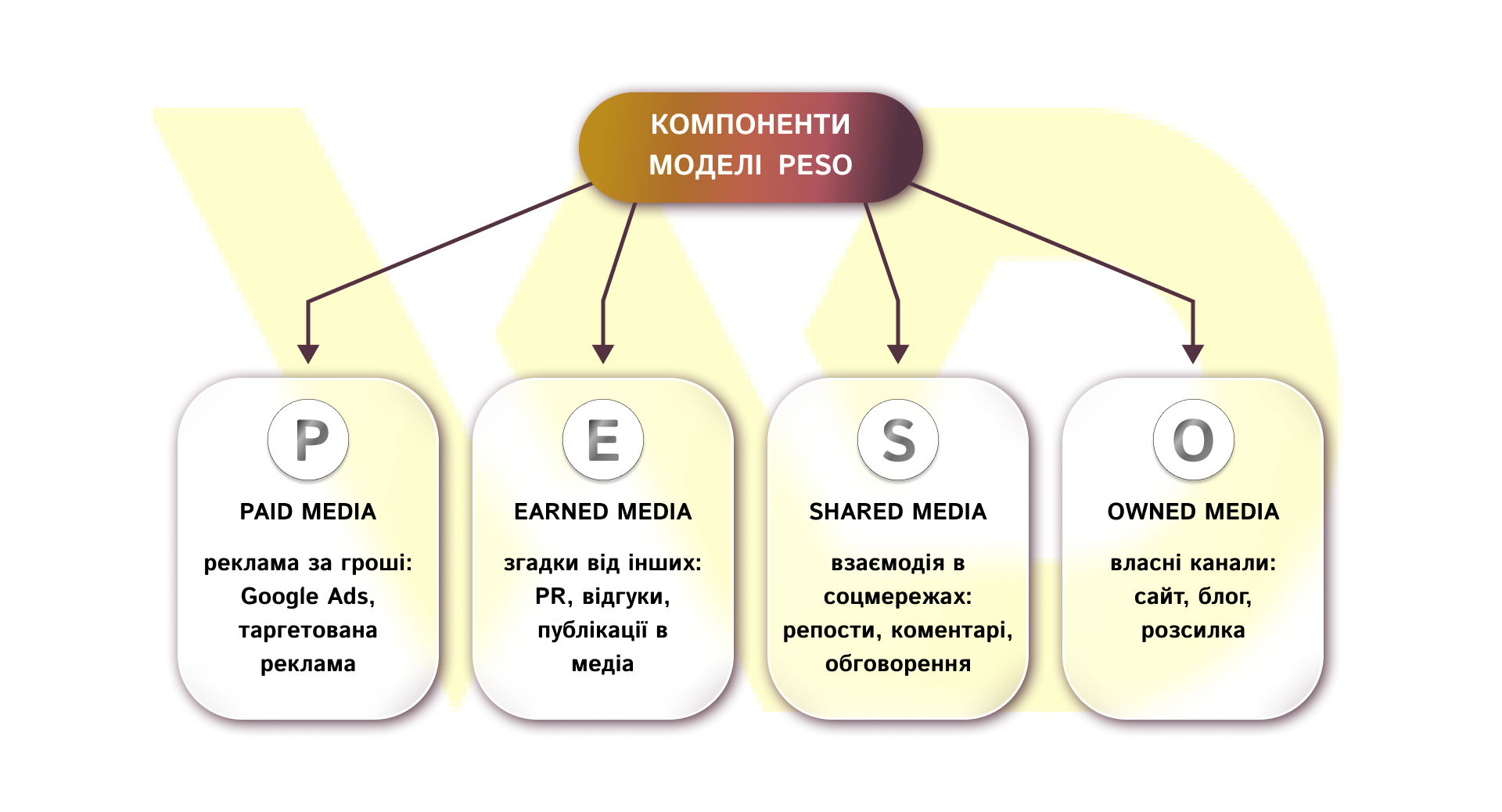
PESO stands for Paid, Earned, Shared, and Owned. The model is an innovative approach to building marketing communications. Due to the clear division of roles of each element, this model helps to create a balanced strategy.
Paid Media
Paid media includes all paid tools that help a brand get the attention of its target audience: contextual and targeted advertising, sponsored posts on social media, and native content on third-party resources. Paid media allows you to quickly scale your reach and test different messages and formats, but requires a clear budget calculation and a performance evaluation system (ROAS, CPA).
Earned Media
«Earned» mentions are media mentions, user comments and reviews, expert reviews, and articles on reputable platforms. Earned media is formed naturally, thanks to the high quality of the product or service, the responsible work of the PR team, and good relations with journalists. This channel strengthens the brand’s reputation, but it takes time and constant development of expertise.
Shared Media
Shared media includes interactions with communities on social networks, user-generated content (UGC), and organic post distribution. Unlike paid publications, authenticity and social proof, i.e. likes, reposts, and comments from real people, are crucial here. Shared media is effective in attracting loyal subscribers and generating live discussions around the brand.
Owned Media
These are all channels that are under the direct control of the brand: website, blog, email newsletter, podcasts, and own events. Owned media is the foundation of the strategy, as it allows you to create long-term content optimized for targeted audience requests and keep users in your own information space. High-quality content builds trust and repeated contact with the brand.
All four components of the model work to create E-E-A-T (experience, expertise, authority, trust), a key criterion for assessing content quality according to Google. That is why SEO cannot be ignored within PESO: by working on each channel and optimizing materials for search queries, you lay the foundation for search engine trust and open up additional opportunities to scale your reach.
The main trends of PESO in 2025
In 2025, the PESO model continues to evolve under the influence of technological innovations and changes in consumer behavior. One of the key trends is the integration of artificial intelligence: generative algorithms help analyze audience reactions and automate some content processes, but at the same time increase the requirements for the authenticity of materials. Businesses seeking to maintain trust must balance the volume of automated publications with personalized communication on behalf of live experts.
The second important trend is the growing role of new social platforms and niche communities. TikTok and Threads have already become entry points for a large audience, and short videos and interactive formats (quizzes, polls in stories) ensure high engagement. At the same time, LinkedIn and thematic communities prove the effectiveness of in-depth professional discussions. As a result, brands should adapt their PESO strategy to each platform, considering not only the message but also the format.
Owned Media: the foundation of the strategy
Owned Media is the solid foundation on which the entire PESO strategy is built. This is where the basic content is formed – the foundation of trust and expertise.
Types of platforms and formats
- Blog and website pages. Articles, case studies, guides, and interviews help to attract organic traffic and secure positions in search engines.
- Email marketing. Personalized newsletters maintain long-term communication with subscribers, increasing repeat conversions.
- Podcasts and webinars. Audio and video formats deepen interaction, demonstrate expertise, and create personal contact with the audience.
Content map: how to build a tree of topics and subtopics
It all starts with content creation. Identify key headings that align with your audience’s interests and business goals. For each heading, formulate sub-topics that cover specific issues, from basic explanations to in-depth analytical materials. For example, if your main heading is «Digital Marketing», the subtopics can be «SEO Optimization 2025», «Features of Targeted Advertising on TikTok», etc. Such a structure helps to create a clear content plan, avoid duplication of information, and facilitate navigation for both users and search bots.
Alternative solutions if you don’t have your own platform yet:
- publish articles on reputable partner resources or industry portals;
- maintain profiles on professional platforms such as LinkedIn, Medium, or industry platforms;
- use crowd and content platforms to launch a newsletter without the need for a separate website;
- organize a series of posts or webinars on influencer and community channels to gain initial reach and engagement;
- quickly deploy a simple mini-landing page or a one-page website based on the templates to lay the foundation for further development of your own channels.
Thus, even without a large in-house resource, you can create expert content and lay the groundwork for further growth of your own media.
Shared Media: engagement and interaction
Shared Media covers those channels where content is distributed directly by or in communication with the audience. Together with the other elements of PESO, Shared Media helps transform passive subscribers into active brand ambassadors.
Choosing platforms and analyzing the audience
Before you start working on social media, you should analyze referral traffic and the interests of your target audience. For example, LinkedIn is suitable for B2B communication and professional discussions, while Instagram and TikTok are suitable for visual content and short videos. Determine which platforms generate the most conversions and focus on those where your audience is most engaged.
Organic engagement and paid promotion
Organic posts build long-term trust. You should post useful, inspirational materials and encourage users to create their own content about your brand (UGC). To speed up the results, use paid promotion of the most successful posts or launch targeted campaigns. The combination of organic and paid approaches allows you to achieve the optimal ratio of cost per reach and engagement.
Engagement through interaction
Regular polls, contests, and interactive stories on Instagram or flash quizzes on TikTok help increase the time spent interacting with content. Be sure to respond to comments and private messages so that users can see the dialog. Encourage subscribers to share their experience with the product – this builds social proof and increases the trust of new potential customers.
Generation Z most often learns about new brands from YouTube, TikTok, and Instagram, with Google search coming in fourth place. Therefore, content should be optimized not only for search engines but also for social platform algorithms.
Paid Media: scaling the reach
Paid Media in the PESO model is responsible for rapid audience growth and testing advertising hypotheses. This channel ensures controlled growth and targeted achievement of the required target audience.
Advertising tools and formats
The arsenal includes:
- contextual advertising (Google Ads);
- Targeted ads on social media (Facebook/Instagram Ads, TikTok Ads);
- native materials on partner resources;
- DSP advertising networks.
Choose the formats that best suit your goals – increasing awareness, attracting leads, or driving sales.
Advertising should work for results, not just “run.”
WEDEX specialists will set up and optimize advertising campaigns on Google, Facebook, Instagram, or TikTok Ads, taking into account your business goals, audience, and budget.
Calculating the budget and KPI
To understand how much to invest in paid channels, define key performance indicators: ROAS (return on advertising investment), CPA (cost per conversion), and CPL (cost per lead). Create a budget allocation model by campaign goal and period. Use A/B testing of creatives and audience settings to gradually optimize costs.
Automation and optimization
Modern ad platforms offer automatic bid assignment and machine learning tools for targeting. However, the key role is played by the correct setting of the initial parameters and regular analysis of the results. Use scripts and APIs to integrate data with CRM and track the full customer journey from the first contact to the purchase.
Earned Media: strengthening your reputation
Earned Media is the «earned» attention of the media and audience. This channel demonstrates the objectivity and authority of the brand. To make this component work effectively, you should take the following steps.
- Establish long-term relationships with journalists, bloggers, and industry experts. Send regular press releases with relevant company news, offer expert commentary on trending topics. Exclusive insights or statistical studies generate more interest and are more likely to be published.
- Choose influencers with an audience that matches the target audience and offer formats that reflect the brand’s values. Joint webinars, master classes, and product reviews on influencers’ blogs generate «earned» mentions. It is important to ensure transparency of the partnership and adhere to ethical standards in order not to lose trust.
- Encourage satisfied customers to leave reviews on third-party platforms (Google Reviews, Capterra, Trustpilot). Publish detailed case studies with success metrics to increase conversion and strengthen your expert image.
How Owned and Earned media boost search rankings
Owned platforms (websites, blogs, email newsletters) give you full control over the content and allow you to implement technical and semantic SEO optimization. At the same time, links from mentions in the media, directories, forums, and longreads are one of the key factors of authority for search engines.
For example, Wikipedia is highly trusted by Google due to the quality of its content and a large number of natural links. Therefore, if materials from a blog are linked to external sources and vice versa, it creates a healthy link profile. And it strengthens the company’s position in search.
Measuring effectiveness
Clear metrics should be set for each of the PESO components.
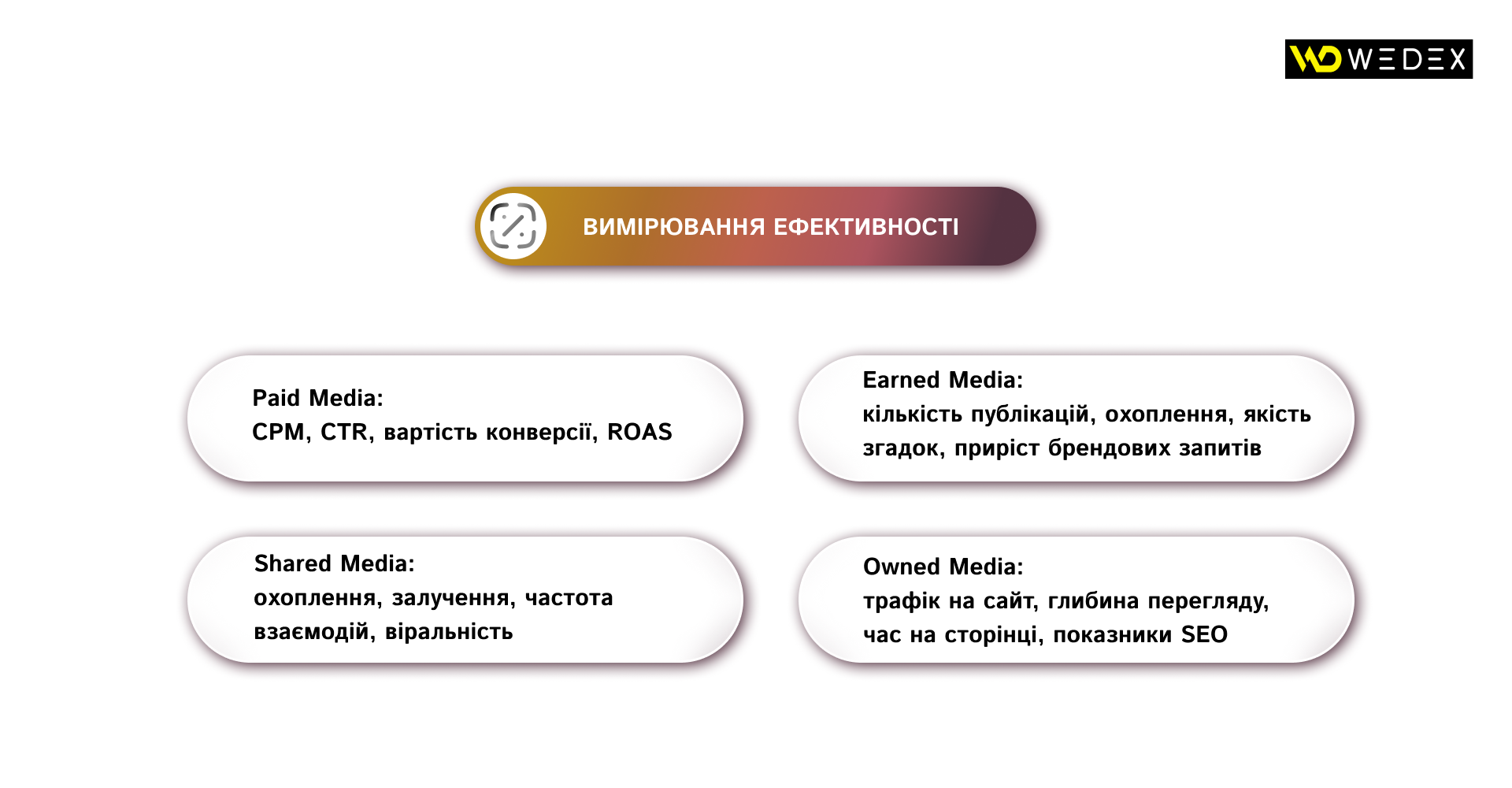
These metrics allow you to evaluate the effectiveness of individual activities and build a complete picture of the strategy’s effectiveness as a whole.
Evaluation of results and reporting
For an objective assessment, it is worth implementing an attribution model that takes into account the impact of all touch points. For example, a user could first see a brand through an advertisement, then read a media publication, and only then make a purchase by clicking on an email newsletter. Building end-to-end analytics allows you to take this path into account and correctly allocate the budget between channels. Reporting to should not be just a set of numbers, but a tool for making decisions on strengthening and optimization.
Practical steps to implement PESO in business
For the PESO model to start working for results, it is not enough to know its theoretical basis. You need a clear, step-by-step implementation plan. Below is a basic scenario to start with.
- Audit your existing communication channels.
Assess what tools you are already using, what coverage and results they provide, and which of these corresponds to the elements of the PESO model.

- Set SMART goals for each media channel.
Define specific, measurable, achievable, relevant, and time-bound indicators (e.g., 50,000 unique social media views per quarter or CPA ≤ €5).

- Develop a content plan and assign roles.
Create a three-month publication calendar with topics, formats (article, video, podcast), and deadlines; assign those responsible for creating, publishing, and analyzing.

- Launch pilot campaigns and conduct A/B testing.
Select 2-3 messages or creatives for Paid and Shared Media with a limited budget, compare CTR, engagement, and conversions, and choose the most effective one.

- Integrate SEO into all channels.
Conduct semantic analysis, include key queries in titles, meta tags, and texts, and set up internal linking between your blog, social media, and press releases.

- Implement regular monitoring and attribution.
Capture KPIs for each media element in a single dashboard on a weekly basis and use an attribution model to evaluate the contribution of each channel.

- Continuously improve and scale your strategy.
Hold internal workshops on new tools and trends, increase budget in the most effective channels, and introduce additional formats.

Although the implementation of PESO requires time and a strategic approach, the synergy of these four types of media allows not only to scale the reach, but also to build trust, build a brand, and grow steadily in search. In 2025, it is integrated strategies based on PESO that will give businesses a competitive advantage. And not due to loudness, but due to consistency, experience, and trust.




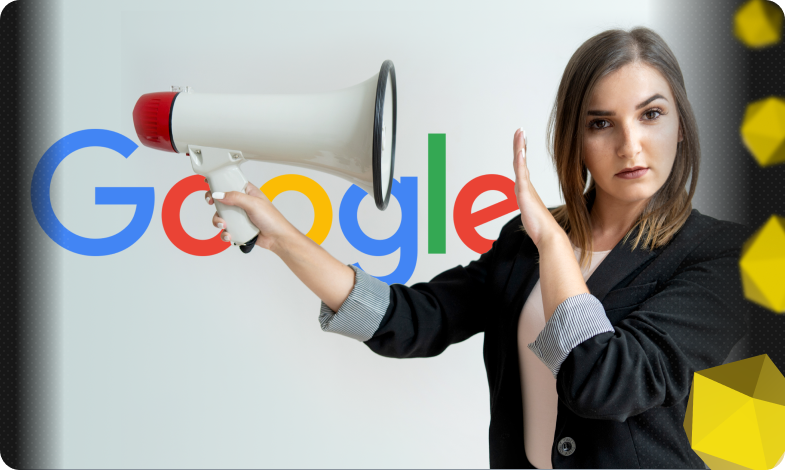

 09/10/2025
09/10/2025  989
989


